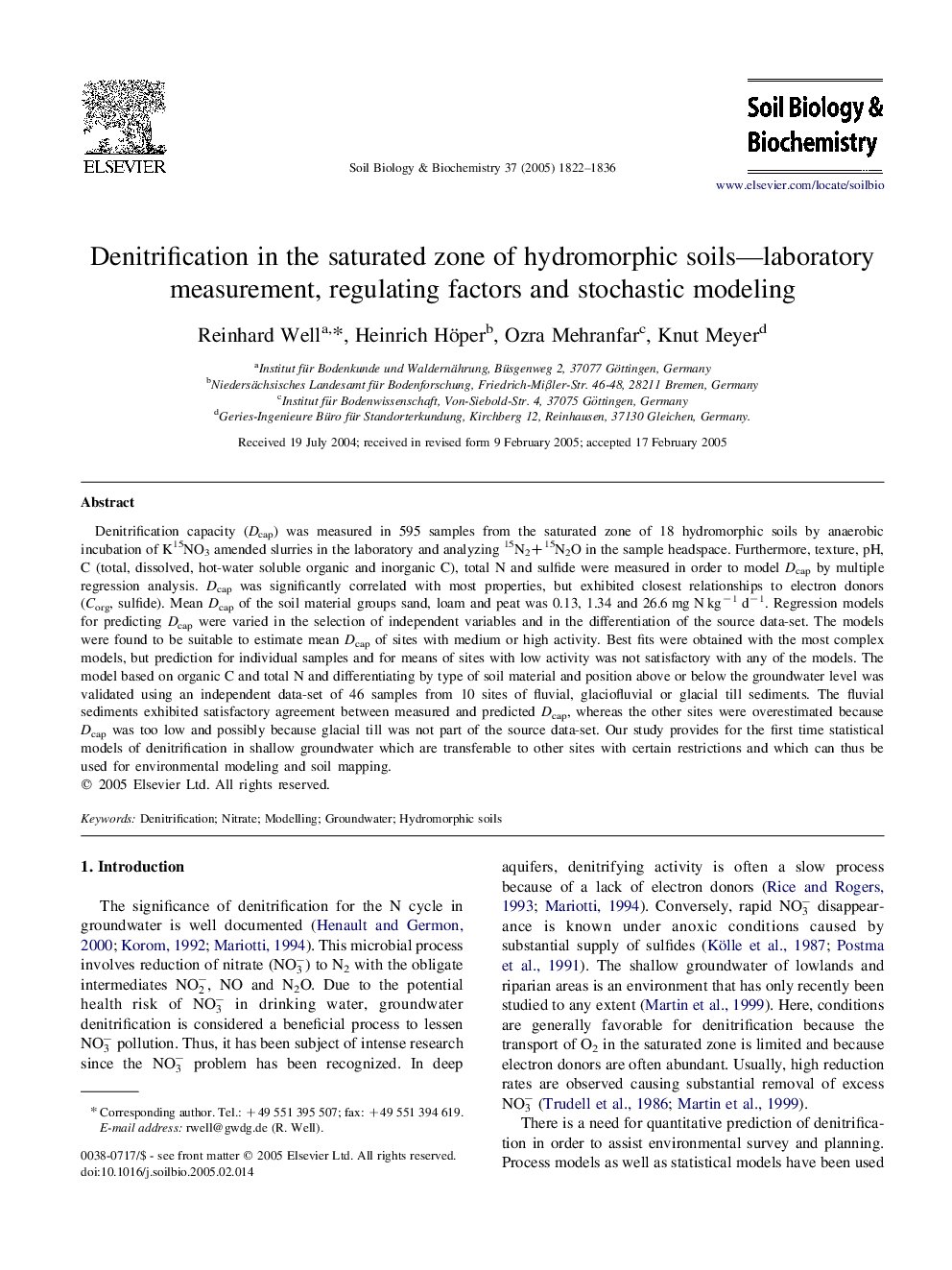| Article ID | Journal | Published Year | Pages | File Type |
|---|---|---|---|---|
| 10846258 | Soil Biology and Biochemistry | 2005 | 15 Pages |
Abstract
Denitrification capacity (Dcap) was measured in 595 samples from the saturated zone of 18 hydromorphic soils by anaerobic incubation of K15NO3 amended slurries in the laboratory and analyzing 15N2+15N2O in the sample headspace. Furthermore, texture, pH, C (total, dissolved, hot-water soluble organic and inorganic C), total N and sulfide were measured in order to model Dcap by multiple regression analysis. Dcap was significantly correlated with most properties, but exhibited closest relationships to electron donors (Corg, sulfide). Mean Dcap of the soil material groups sand, loam and peat was 0.13, 1.34 and 26.6 mg N kgâ1 dâ1. Regression models for predicting Dcap were varied in the selection of independent variables and in the differentiation of the source data-set. The models were found to be suitable to estimate mean Dcap of sites with medium or high activity. Best fits were obtained with the most complex models, but prediction for individual samples and for means of sites with low activity was not satisfactory with any of the models. The model based on organic C and total N and differentiating by type of soil material and position above or below the groundwater level was validated using an independent data-set of 46 samples from 10 sites of fluvial, glaciofluvial or glacial till sediments. The fluvial sediments exhibited satisfactory agreement between measured and predicted Dcap, whereas the other sites were overestimated because Dcap was too low and possibly because glacial till was not part of the source data-set. Our study provides for the first time statistical models of denitrification in shallow groundwater which are transferable to other sites with certain restrictions and which can thus be used for environmental modeling and soil mapping.
Related Topics
Life Sciences
Agricultural and Biological Sciences
Soil Science
Authors
Reinhard Well, Heinrich Höper, Ozra Mehranfar, Knut Meyer,
